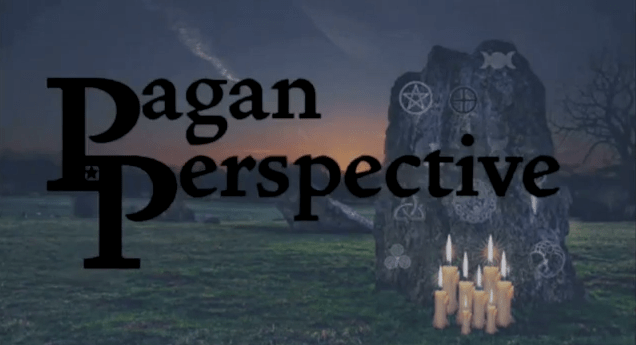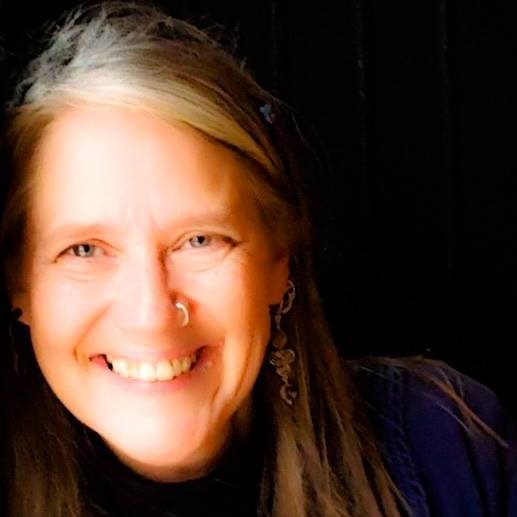Ethan Doyle White, a PhD student in Anthropology of Religion at University College London, recently discussed his research into his 2015 book Wicca: History, Belief, and Community in Modern Pagan Witchcraft. In this interview with the RSP, Doyle White states that he wrote this text ‘[…]to summarise the state of all previous research on Wicca […]’ and to fill an obvious gap in academic scholarship. While I applaud his attempt to write an initial definitive text, and certainly agree with him that there is a crucial lack of scholarship on Wicca and contemporary forms of Paganism, Doyle White posits a number of understandings that, as both a Pagan scholar and Pagan Minister, I must open for further discussion and interpretation.
In his opening response, Doyle White cites that ‘Wicca is the largest religion within contemporary Paganism’ citing unnamed ‘sociological, anthropological and ethnographic’ evidence. Doyle White’s statement reveals two distinct problematic issues. Firstly, Doyle White appears to be confusing the difference between Witchcraft and Wicca often presenting them as one in the same when they are quite different traditions. Although Doyle White is correct in his historical connection between Jules Michelet, Margaret Murray, and Gerald Gardner in the foundation of Wicca in the early twentieth century, he appears to have missed a vital point. Gardner was the first to write down a dogma for the Wiccan tradition—a literal guide for adherents as to structure, form, ritual, and beliefs. A majority of contemporary Wiccans are Gardnerian Wiccans and follow (and in some cases modify) the templates Gardner constructed. High Priestess Phyllis Curott is a prominent contemporary Wiccan who has worked with the UN, the Parliament of World Religions, and Harvard’s Religious Pluralism Project. However, there are a number of contemporary Witchcraft traditions that pre-date Gardner such as the Hermetic Order of the Golden Dawn (founded in 1888) and the Ancient Mystical Order Rosae Crucis (who trace their historical roots to 1500 BCE). There are contemporary covens (or loosely-organised groups) of Witches both in the US and in the UK that do not self-identify as Wiccan; these Witches (both male and female) perform rituals and spellcasting either in solitary practice or within a coven or loosely-organised group. None of these traditions should be confused with or categorised with Wicca; they are various forms of Witchcraft.
Another complication with Doyle White’s statement that ‘Wicca is the largest religion within contemporary Paganism’ lies in the classification ‘Wicca’ and the opportunity to use it as a self-identifying label within available contemporary sociological data. Religious identifications that are alternative to the major world religions are relatively new to census questionnaires. However, there is a stark difference between the available options on religious identity in the 2012 US Census than there are in the 2011 UK Census. The US lists only four options: Wiccan, Pagan, Spiritualists, and Other; whereas the UK includes religious affiliations such as Wicca, Druid, Spiritualist, Heathen, Satanism, Witchcraft, New Age, Shamanism, Pagan, Pantheism, and the highly-popular Jedi Knight. What this implies is that the data from the US is skewed if adherents from a wide variety of traditions have only four limiting options to choose from; a practicing Witch can tick either ‘Wicca’ or ‘Pagan’ as a self-identifying religious affiliation. Whereas, in the United Kingdom much more data is available as to specific religious affiliation including a variety of new religious movements. Voices from the Pagan Census: A National Survey of Witches and Neo-Pagans in the United States (2003) by Helen Berger, Evan Leach, and Leigh Shaffer, included six ‘Neo-Pagan’ movements, three of which predominated the survey: Wiccans, Pagans, and Goddess-worshippers, but also included Druids, Shamans, and the eclectic Unitarian Universalist Pagans. Ultimately, the US Census forces practitioners to choose between self-identifying as either Wiccan or Pagan obfuscating the data’s accuracy through the limitation of choices. In essence, the Wiccan community is, perhaps, much smaller than Doyle White asserts.
While accurately discussing the range of theological principles found in Wicca (from ditheism and polytheism to feminist monotheism), Doyle White includes atheists and agnostics into this theological array stating that this category includes those working with Jungian archetypes. My own doctoral research into the significance of Jung and post-Jungian theory to the development of the Western Goddess Movement contradicts Doyle White’s assessment. In fact, while the Jungian Goddess archetype can be traced back in the US to the 1920s and M Esther Harding (a devout student of Jung’s), evidence indicates that post-Jungian Jean Shinoda Bolen created a bridge from theory to religious praxis back in 1994 with her rebirth memoir Crossing to Avalon. Jung’s influence on Western faith traditions from the Catholic Charismatic movement to the development and advancement of Bolen’s post-Jungian Goddess Feminism, as a faith tradition which openly espouses a monotheaistic paradigm, stands in direct contradiction to Doyle White’s assertion that all post-Jungians are atheists or agnostics. While some post-Jungians remain purely analytical, a vast majority of contemporary post-Jungian Goddess adherents have crossed the bridge from analytics to praxis and consider themselves perhaps more ‘spiritual’ than ‘religious’.
When speaking of spellcasting, Doyle White states it is often used ‘in a negative sense’ preserving fictional caricatures of Witches dichotomously as evil or good. The perpetuation of these divergent and inaccurate stereotypes can only further hinder critical scholarship in this field. Phyllis Curott attempted to educate and change ‘the world’s prejudice’ in her 1998 memoir, Book of Shadows.
In closing, Doyle White calls for new terminology, preferring the Academic Study of Paganism, and I agree. Pagan Studies is problematic as a label and is often exclusionary, but I disagree with Doyle White when he states that we must stop accepting Pagan definitions from Pagans. Admittedly, definitions from lay adherents are often idealised and problematic, however, some of Doyle White’s statements exemplify the crucial need for viable Pagan scholarship from within the community that is analytically useful to scholars. Advancement of this scholarly pursuit requires the implementation of Academic Study of Paganism departments in which a multidisciplinary approach is beneficial, but must also include practicing Pagans. Ultimately Doyle White makes a good contribution to Pagan scholarship, but he exemplifies the need for Pagan academics and critical Pagan analysis.
References
Berger HA, Leach EA and Shaffer LS (2003) Voices from the Pagan Census: A National Survey of Witches and Neo Pagans in the United States. Columbia, SC: University of South Carolina Press.
Bolen, JS (1994) Crossing to Avalon: A Woman’s Midlife Pilgrimage. New York: Harper Collins.
Curott P (1998) Book of Shadows: A Modern Woman’s Journey into the Wisdom of Witchcraft and the Magic of the Goddess. New York: Broadway Books.
Harding ME (1971) Woman’s Mysteries: Ancient and Modern. Introduction by CG Jung. Boston: Shambhala Publications.
‘Iolana P (2016) Jung and Goddess: The Significance of Jungian and post-Jungian Theory to the Development of the Western Goddess Movement. An unpublished Thesis. University of Glasgow.
Office for National Statistics (ONS) (2004) ‘Focus on Religion’ Available at: http://www.ons.gov.uk/ons/rel/ethnicity/focus-on-religion/index.html
_____. (2012) Religion in England and Wales 2011. Available at: http://www.ons.gov.uk/ons/rel/census/2011-census/key-statistics-for-local-authorities-in-england-and-wales/rpt-religion.html
U.S Census Bureau (2012) Statistical Abstract of the United States, Table 75. Self-Described Religious Identification of Adult Population: 1990, 2001, and 2008. Available at: http://www.census.gov/compendia/statab/2012/tables/12s0075.pdf
Doyle White E (2012) In Defence of Pagan Studies: A Response to Davidsen’s Critique. In: The Pomegranate: The International Journal of Pagan Studies, Vol 14, No 1 (5-21).



